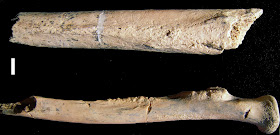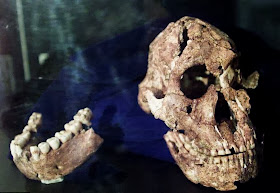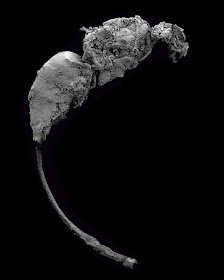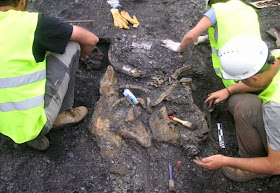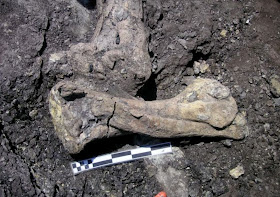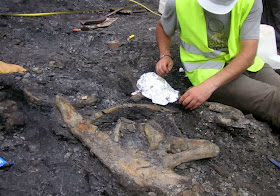At Xmas Time
I
"What shall I write?" asked Yegor,
dipping his pen in the ink.
Vasilissa had not seen her daughter for four
years. Efimia had gone away to St. Petersburg
with her husband after her wedding, had written
two letters, and then had vanished as if the earth
had engulfed her, not a word nor a sound had come
from her since. So now, whether the aged mother
was milking the cow at daybreak, or lighting the
stove, or dozing at night, the tenor of her
thoughts was always the same: "How is Efimia?
Is she alive and well?" She wanted to send
her a letter, but the old father could not write,
and there was no one whom they could ask to write
it for them.
But now Xmas had come, and Vasilissa could
endure the silence no longer. She went to the
tavern to see Yegor, the innkeeper's wife's
brother, who had done nothing but sit idly at home
in the tavern since he had come back from military
service, but of whom people said that he wrote the
most beautiful letters, if only one paid him
enough. Vasilissa talked with the cook at the
tavern, and with the innkeeper's wife, and finally
with Yegor himself, and at last they agreed on a
price of fifteen copecks.
So now, on the second day of the Xmas
festival, Yegor was sitting at a table in the inn
kitchen with a pen in his hand. Vasilissa was
standing in front of him, plunged in thought, with
a look of care and sorrow on her face. Her
husband, Peter, a tall, gaunt old man with a bald,
brown head, had accompanied her. He was staring
steadily in front of him like a blind man; a pan
of pork that was frying on the stove was sizzling
and puffing, and seeming to say: "Hush, hush,
hush!" The kitchen was hot and close.
"What shall I write?" Yegor asked
again.
"What's that?" asked Vasilissa,
looking at him angrily and suspiciously.
"Don't hurry me! You are writing this letter
for money, not for love! Now then, begin. To our
esteemed son-in-law, Andrei Khrisanfltch, and our
only and beloved daughter Efimia, we send
greetings and love, and the everlasting blessing
of their parents."
"All right, fire away!"
"We wish them a happy Xmas. We are
alive and well, and we wish the same for you in
the name of god, our Father in heaven--our Father
in heaven--"
Vasilissa stopped to think, and exchanged
glances with the old man.
"We wish the same for you in the name of god, our Father in Heaven--" she repeated and
burst into tears.
That was all she could say. Yet she had
thought, as she had lain awake thinking night
after night, that ten letters could not contain
all she wanted to say. Much water had flowed into
the sea since their daughter had gone away with
her husband, and the old people had been as lonely
as orphans, sighing sadly in the night hours, as
if they had buried their child. How many things
had happened in the village in all these years!
How many people had married, how many had died!
How long the winters had been, and how long the
nights!
"My, but it's hot!" exclaimed Yegor,
unbuttoning his waistcoat. "The temperature
must be seventy! Well, what next?" he asked.
The old people answered nothing.
"What is your son-in-law's
profession?"
"He used to be a soldier, brother; you
know that," replied the old man in a feeble
voice. "He went into military service at the
same time you did. He used to be a soldier, but
now he is in a hospital where a doctor treats sick
people with water. He is the door-keeper
there."
"You can see it written here," said
the old woman, taking a letter out of her
handkerchief. "We got this from Efimia a
long, long time ago. She may not be alive
now."
Yegor reflected a moment, and then began to
write swiftly.
"Fate has ordained you for the military
profession," he wrote, "therefore we
recommend you to look into the articles on
disciplinary punishment and penal laws of the war
department, and to find there the laws of
civilisation for members of that department."
When this was written he read it aloud whilst
Vasilissa thought of how she would like to write
that there had been a famine last year, and that
their flour had not even lasted until Xmas,
so that they had been obliged to sell their cow;
that the old man was often ill, and must soon
surrender his soul to god; that they needed
money--but how could she put all this into words?
What should she say first and what last?
"Turn your attention to the fifth volume
of military definitions," Yegor wrote.
"The word soldier is a general appellation, a
distinguishing term. Both the commander-in-chief
of an army and the last infantryman in the ranks
are alike called soldiers--"
The old man's lips moved and he said in a low
voice:
"I should like to see my little
grandchildren!"
"What grandchildren?" asked the old
woman crossly. "Perhaps there are no
grandchildren."
"No grandchildren? But perhaps there are!
Who knows?"
"And from this you may deduce," Yegor
hurried on, "which is an internal, and which
is a foreign enemy. Our greatest internal enemy
is Bacehus--"
The pen scraped and scratched, and drew long,
curly lines like fish-hooks across the paper.
Yegor wrote at full speed and underlined each
sentence two or three times. He was sitting on a
stool with his legs stretched far apart under the
table, a fat, lusty creature with a fiery nape and
the face of a bulldog. He was the very essence of
coarse, arrogant, stiff-necked vulgarity, proud to
have been born and bred in a pot-house, and
Vasilissa well knew how vulgar he was, but could
not find words to express it, and could only glare
angrily and suspiciously at him. Her head ached
from the sound of his voice and his unintelligible
words, and from the oppressive heat of the room,
and her mind was confused. She could neither
think nor speak, and could only stand and wait for
Yegor's pen to stop scratching. But the old man
was looking at the writer with unbounded
confidence in his eyes. He trusted his old woman
who had brought him here, he trusted Yegor, and,
when he had spoken of the hydropathic
establishment just now, his face had shown that he
trusted that, and the healing power of its waters.
When the letter was written, Yegor got up and
read it aloud from beginning to end. The old man
understood not a word, but he nodded his head
confidingly, and said:
"Very good. It runs smoothly. Thank you
kindly, it is very good."
They laid three five-copeck pieces on the table
and went out. The old man walked away staring
straight ahead of him like a blind man, and a look
of utmost confidence lay in his eyes, but
Vasilissa, as she left the tavern, struck at a dog
in her path and exclaimed angrily:
"Ugh--the plague!"
All that night the old woman lay awake full of
restless thoughts, and at dawn she rose, said her
prayers, and walked eleven miles to the station to
post the letter.
II
Doctor Moselweiser's hydropathic establishment
was open on New Year's Day as usual; the only
difference was that Andrei Khrisaufitch, the
doorkeeper, was wearing unusually shiny boots and
a uniform trimmed with new gold braid, and that he
wished every one who came in a happy New Year.
It was morning. Andrei was standing at the
door reading a paper. At ten o'clock precisely an
old general came in who was one of the regular
visitors of the establishment. Behind him came
the postman. Andrei took the general's cloak, and
said:
"A happy New Year to your
Excellency!"
"Thank you, friend, the same to you!"
And as he mounted the stairs the general nodded
toward a closed door and asked, as he did every
day, always forgetting the answer:
"And what is there in there?"
"A room for massage, your
Excellency."
When the general's footsteps had died away,
Andrei looked over the letters and found one
addressed to him. He opened it, read a few lines,
and then, still looking at his newspaper,
sauntered toward the little room down-stairs at
the end of a passage where he and his family
lived. His wife Efimia was sitting on the bed
feeding a baby, her oldest boy was standing at her
knee with his curly head in her lap, and a third
child was lying asleep on the bed.
Andrei entered their little room, and handed
the letter to his wife, saying:
"This must be from the village."
Then he went out again, without raising his
eyes from his newspaper, and stopped in the
passage not far from the door. He heard Efimia
read the first lines in a trembling voice. She
could go no farther, but these were enough. Tears
streamed from her eyes and she threw her arms
round her eldest child and began talking to him
and covering him with kisses. It was hard to tell
whether she was laughing or crying.
"This is from granny and granddaddy,"
she cried-- "from the village--oh, Queen of
Heaven!-- Oh! holy saints! The roofs are piled
with snow there now--and the trees are white, oh,
so white! The little children are out coasting on
their dear little sleddies--and granddaddy
darling, with his dear bald head is sitting by the
big, old, warm stove, and the little brown
doggie--oh, my precious chickabiddies--"
Andrei remembered as he listened to her that
his wife had given him letters at three or four
different times, and had asked him to send them to
the village, but important business had always
interfered, and the letters had remained lying
about unposted.
"And the little white hares are skipping
about in the fields now--" sobbed Efimia,
embracing her boy with streaming eyes.
"Granddaddy dear is so kind and good, and
granny is so kind and so full of pity. People's
hearts are soft and warm in the village-- There is
a little church there, and the men sing in the
choir. Oh, take us away from here, Queen of
Heaven! Intercede for us, merciful mother!"
Andrei returned to his room to smoke until the
next patient should come in, and Efimia suddenly
grew still and wiped her eyes; only her lips
quivered. She was afraid of him, oh, so afraid!
She quaked and shuddered at every look and every
footstep of his, and never dared to open her mouth
in his presence.
Andrei lit a cigarette, but at that moment a
bell rang up-stairs. He put out his cigarette,
and assuming a very solemn expression, hurried to
the front door.
The old general, rosy and fresh from his bath,
was descending the stairs.
"And what is there in there?" he
asked, pointing to a closed door.
Andrei drew himself up at attention, and
answered in a loud voice:
"The hot douche, your Excellency."



















 After
Napoleon abdicated in 1814, Britain began a series of offensives
designed to bring about victory over the Americans in the War of 1812.
Among them was an
After
Napoleon abdicated in 1814, Britain began a series of offensives
designed to bring about victory over the Americans in the War of 1812.
Among them was an  Naval
expeditions under Sir John Sherbrooke (left) and his subordinates
captured the coastal towns of Eastport, Machias and Castine, then sailed
inland up the Penobscot River, capturing Hampden and Bangor. Sherbrooke
declared that Maine east of the Penobscot was now a British colony
named New Ireland.
Naval
expeditions under Sir John Sherbrooke (left) and his subordinates
captured the coastal towns of Eastport, Machias and Castine, then sailed
inland up the Penobscot River, capturing Hampden and Bangor. Sherbrooke
declared that Maine east of the Penobscot was now a British colony
named New Ireland.




